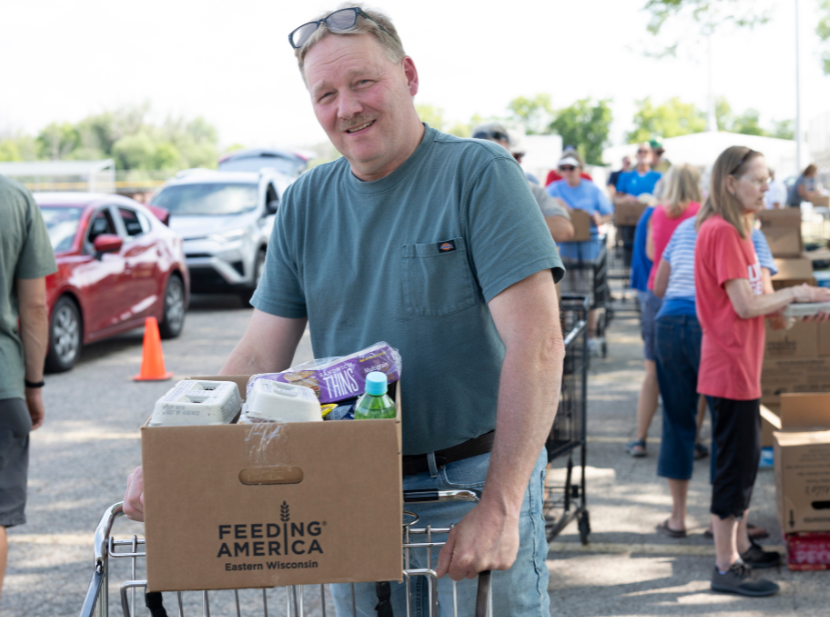New Map the Meal Gap Data Shows Food Insecurity Worsening Across Eastern Wisconsin
May 14, 2025

The latest Map the Meal Gap study, released in May by Feeding America, reveals a troubling rise in food insecurity across Feeding America Eastern Wisconsin’s 35-county service area. The data, based on 2023 estimates, shows that nearly 1-in-8 people in our footprint are facing food insecurity, a significant increase from 1-in-10 in 2022.
In total, 459,730 people across Eastern Wisconsin do not have consistent access to enough food, an increase of more than 53,000 neighbors from the year prior. While the child food insecurity rate has slightly improved, from 17.7% to 17.3%, 1-in-6 children still live with uncertainty about their next meal. At the same time, more children are living below 185% of the federal poverty line, making it harder for families to make ends meet even as economic recovery efforts continue.
“We see the stories behind these numbers every day,” said Feeding America Eastern Wisconsin President and CE, Patti Habeck. “Families working two jobs and still struggling to afford groceries. Seniors having to choose between medication and meals. Parents skipping dinner so their children can eat. The latest data confirms what we already know: the need is growing, and it’s growing fast. Our communities need more support, now more than ever.”
Milwaukee County saw one of the most significant shifts in food insecurity, where the overall rate rose from 1-in-8 to 1-in-7. The data for Milwaukee County also shows persistent and stark disparities across race and age including 1-in-4 children, 1-in-3 Black persons, 1-in-4 Hispanic persons, and 1-in-10 White persons.
No county in Feeding America Eastern Wisconsin’s footprint saw a decrease in overall food insecurity. Every single county experienced an increase, reinforcing the reality that hunger is not isolated, it’s impacting every corner of our state, from rural towns to urban centers.
The Map the Meal Gap report underscores what decades of research and on-the-ground experience have shown: food insecurity disproportionately affects communities of color and households with low incomes. These disparities reflect long-standing systemic barriers to economic opportunity and access to nutritious food.
While the rate of food insecurity for White persons in our service area is 1-in-11, Black persons are three times as likely to experience hunger. Hispanic community members also face significantly higher food insecurity, with 1-in-4 affected. These figures are unacceptable, and they demand urgent, equitable solutions.
Now in its 15th year, Map the Meal Gap is the only study that provides local-level estimates of food insecurity and food costs for every county and congressional district in the United States. Developed by Feeding America, the study combines data from the USDA, U.S. Census Bureau, Bureau of Labor Statistics, and NielsenIQ to provide a detailed picture of who is facing hunger and where they live.
The study also highlights the economic shortfall food-insecure households face and how much additional income would be needed for these families to have enough food. With rising grocery prices and continued cuts to safety net programs, many families are falling further behind.
Feeding America Eastern Wisconsin collaborates with nearly 400 local pantries, shelters, and meal programs to provide healthy, fresh food to neighbors in need. But we can’t do it alone. The Map the Meal Gap data makes it clear: hunger is a growing crisis in our communities, and it will take individuals, corporations, policymakers, and nonprofits working together to meet the need.
To explore the data further and see how food insecurity affects your community, visit Feeding America’s interactive map HERE.
